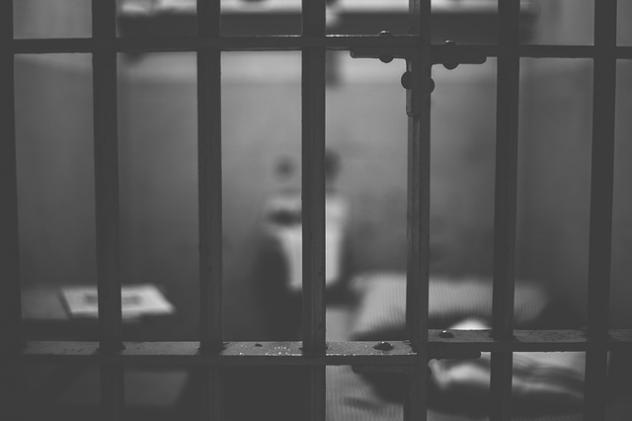This is from a text from the American Bar Association (ABA) Criminal Justice Section, in a recommendation to the House of Delegates, concerning effective monitoring of prisons.
It was written in 2008, and Nevada Cure thinks that this should be implemented in Nevada and everywhere else.
This type of MONITORING is exactly what is needed in Nevada. We believe
the independent ombudsman would serve this purpose. Please pass the Ombudsman Bill introduced by Senator Segerblom.
Here you can find Minutes of the Advisory Commission on the Administration of Justice Meeting of May 1st, 2014, in which NV-Cure Director John Witherow explained the need for an Ombudsman to monitor NDOC.
Alternatively, make
NV-CURE an Independent Monitor and give us the power, money and staff
that can do the job that needs to be done. Thank you.
KEY REQUIREMENTS FOR THE EFFECTIVE MONITORING
OF CORRECTIONAL AND DETENTION FACILITIES
1. The monitoring entity is independent of the agency operating
or utilizing the
correctional or detention facility.
2. The monitoring entity is adequately funded and staffed.
3. The head of the monitoring entity is appointed for a fixed
term by an elected official,
is subject to confirmation by a legislative body, and can be
removed only for just cause.
4. Inspection teams have the expertise, training, and requisite
number of people to meet
the monitoring entity’s purposes.
5. The monitoring entity has the duty to conduct regular
inspections of the facility, as
well as the authority to examine, and issue reports on, a
particular problem at one or more
facilities.
6. The monitoring entity is authorized to inspect or examine all
aspects of a facility’s operations and conditions including, but not limited to: staff
recruitment, training,
supervision, and discipline; inmate deaths; medical and
mental-health care; use of force;
inmate violence; conditions of confinement; inmate disciplinary
processes; inmate
grievance processes; substance-abuse treatment; educational,
vocational, and other programming; and reentry planning.
7. The monitoring entity uses an array of means to gather and
substantiate facts,
including observations, interviews, surveys, document and record
reviews, video and tape
recordings, reports, statistics, and performance-based outcome
measures.
8. Facility and other governmental officials are authorized and
required to cooperate fully
and promptly with the monitoring entity.
9. To the greatest extent possible consistent with the
monitoring entity’s purposes, the
monitoring entity works collaboratively and constructively with
administrators,
legislators, and others to improve the facility’s operations and
conditions.
10. The monitoring entity has the authority to conduct both
scheduled and unannounced
inspections of any part or all of the facility at any time. The
entity must adopt procedures
to ensure that unannounced inspections are conducted in a
reasonable manner.
11. The monitoring entity has the authority to obtain and
inspect any and all records,
including inmate and personnel records, bearing on the
facility’s operations or conditions.
12. The monitoring entity has the authority to conduct
confidential interviews with any person, including line staff and inmates, concerning the
facility’s operations and
conditions; to hold public hearings; to subpoena witnesses and
documents; and to require
that witnesses testify under oath.
13. Procedures are in place to enable facility administrators,
line staff, inmates, and others
to transmit information confidentially to the monitoring entity
about the facility’s
operations and conditions.
14. Adequate safeguards are in place to protect individuals who
transmit information to
the monitoring entity from retaliation and threats of
retaliation.
15. Facility administrators are provided the opportunity to
review monitoring reports and
provide feedback about them to the monitoring entity before
their dissemination to the
public, but the release of the reports is not subject to
approval from outside the monitoring entity.
16. Monitoring reports apply legal requirements, best
correctional practices, and other
criteria to objectively and accurately review and assess a
facility’s policies, procedures, programs, and practices; identify systemic problems and the
reasons for them; and proffer
possible solutions to those problems.
17. Subject to reasonable privacy and security requirements as
determined by the
monitoring entity, the monitoring entity’s reports are public,
accessible through the
Internet, and distributed to the media, the jurisdiction’s
legislative body, and its top
elected official.
18. Facility administrators are required to respond publicly to
monitoring reports; to
develop and implement in a timely fashion action plans to
rectify problems identified in those reports; and to inform the public semi-annually of their
progress in implementing
these action plans. The jurisdiction vests an administrative
entity with the authority to redress noncompliance with these requirements.
19. The monitoring entity continues to assess and report on
previously identified
problems and the progress made in resolving them until the
problems are resolved.
20. The jurisdiction adopts safeguards to ensure that the
monitoring entity is meeting its
designated purposes, including a requirement that it publish an
annual report of its
findings and activities that is public, accessible through the
Internet, and distributed to the media, the jurisdiction’s legislative body, and its top elected
official.
Respectfully submitted,
Stephen J. Saltzburg
Chair, Section of Criminal Justice
August 2008
